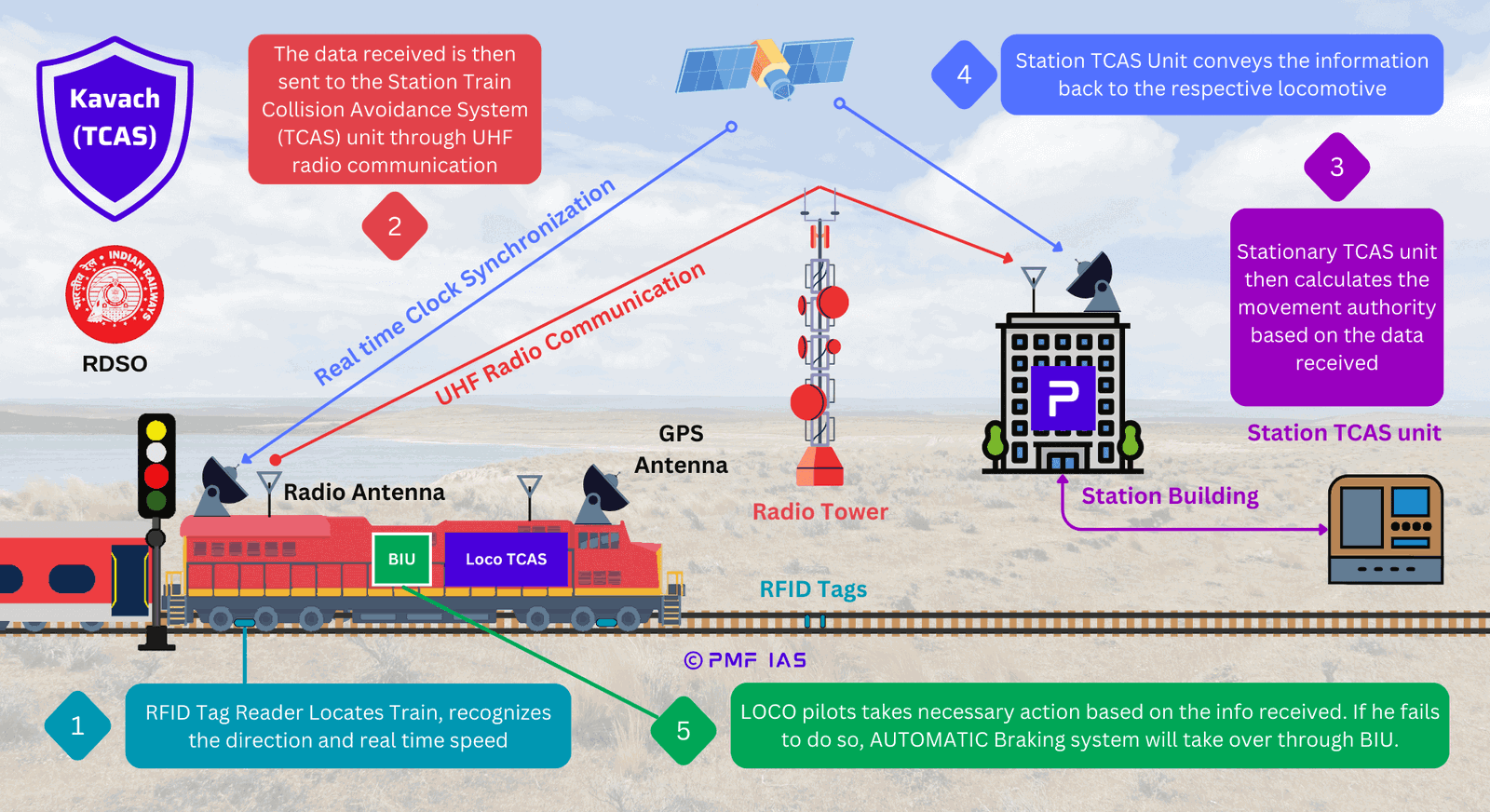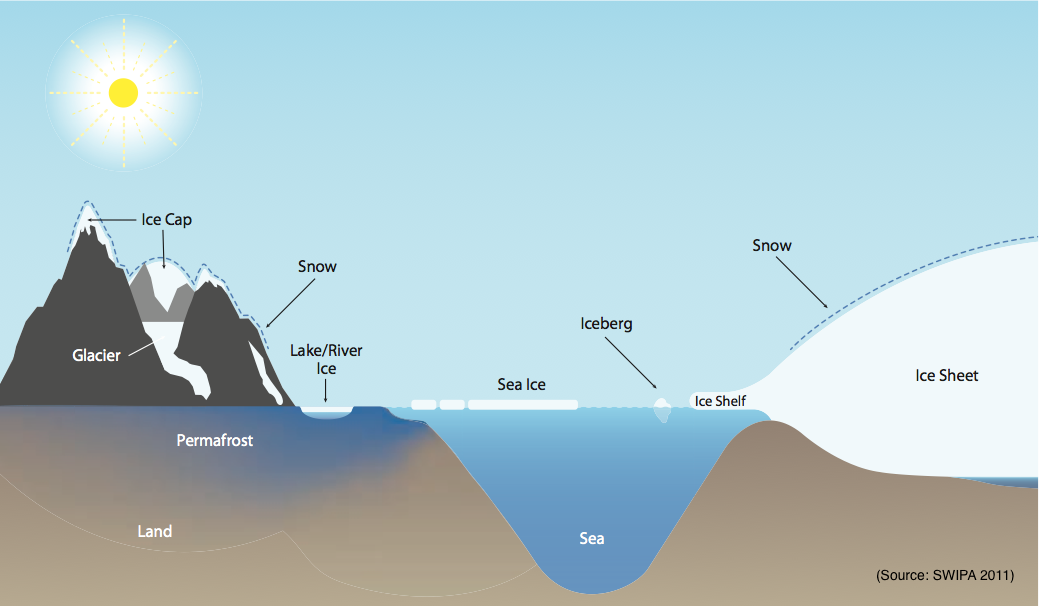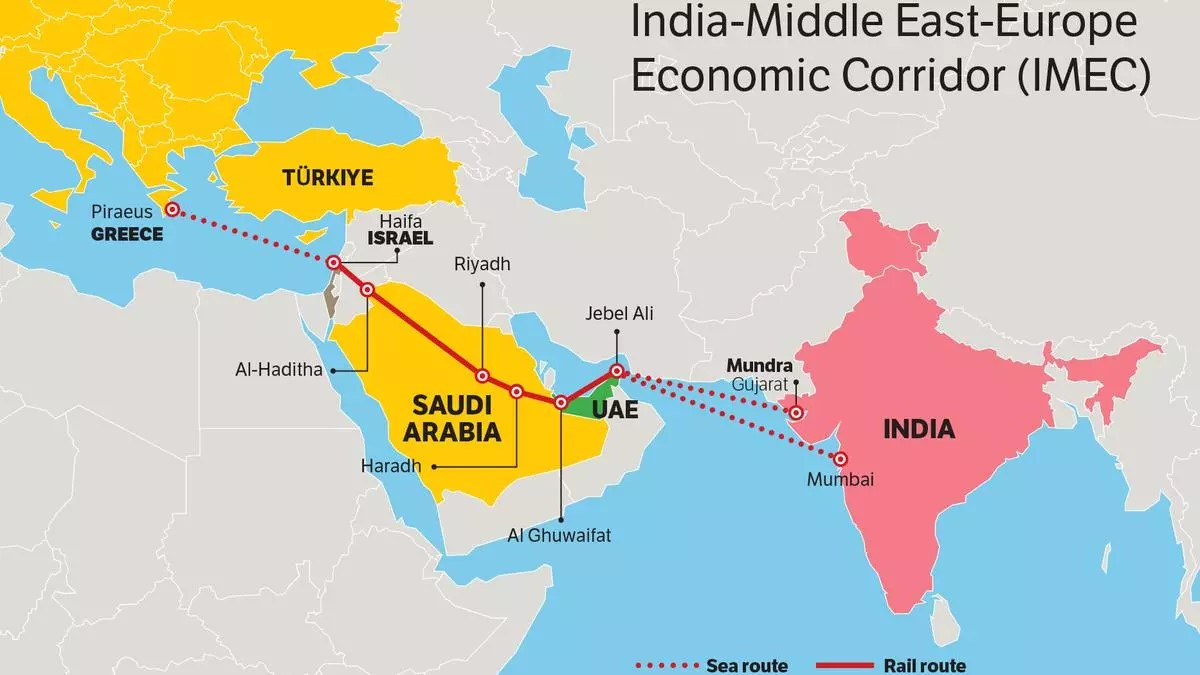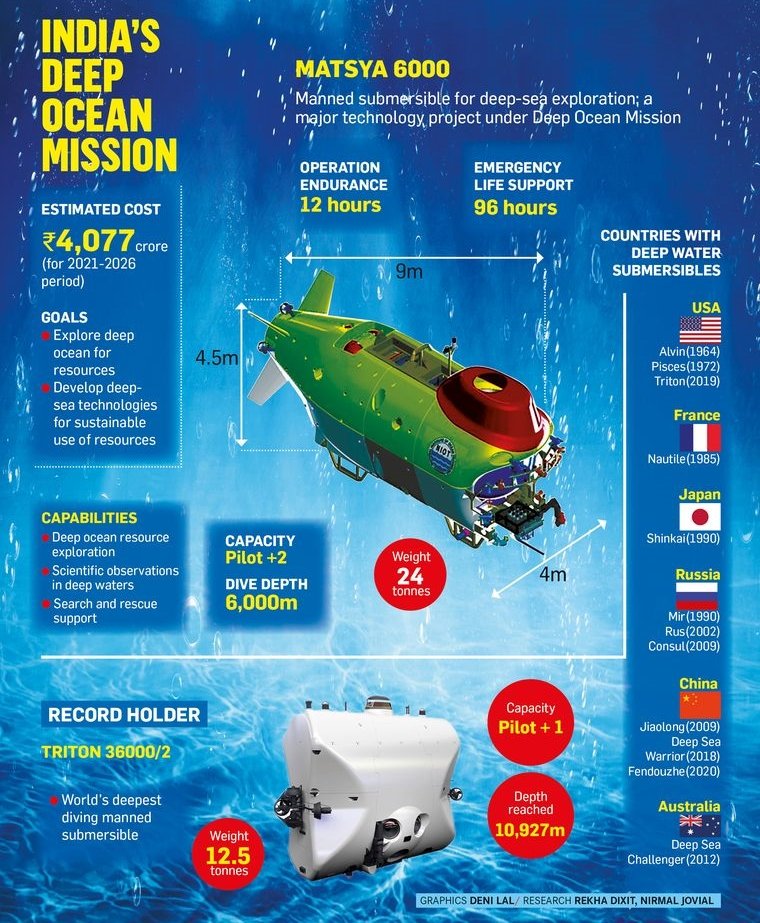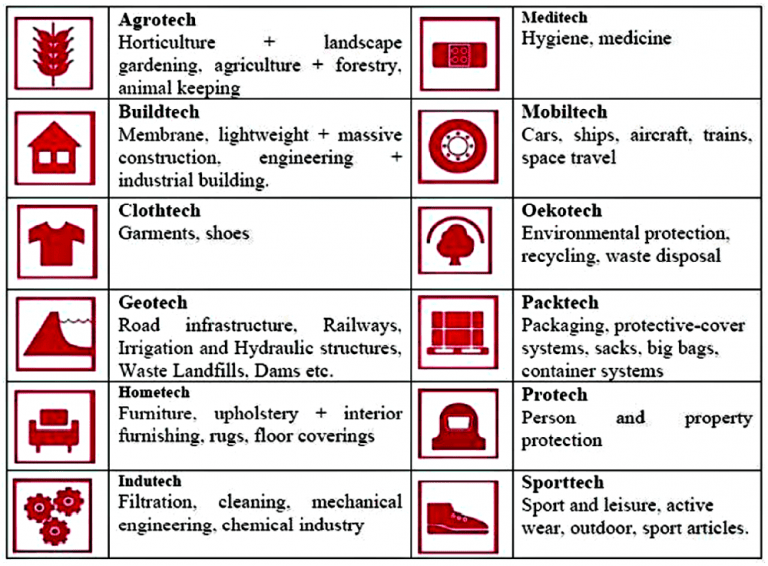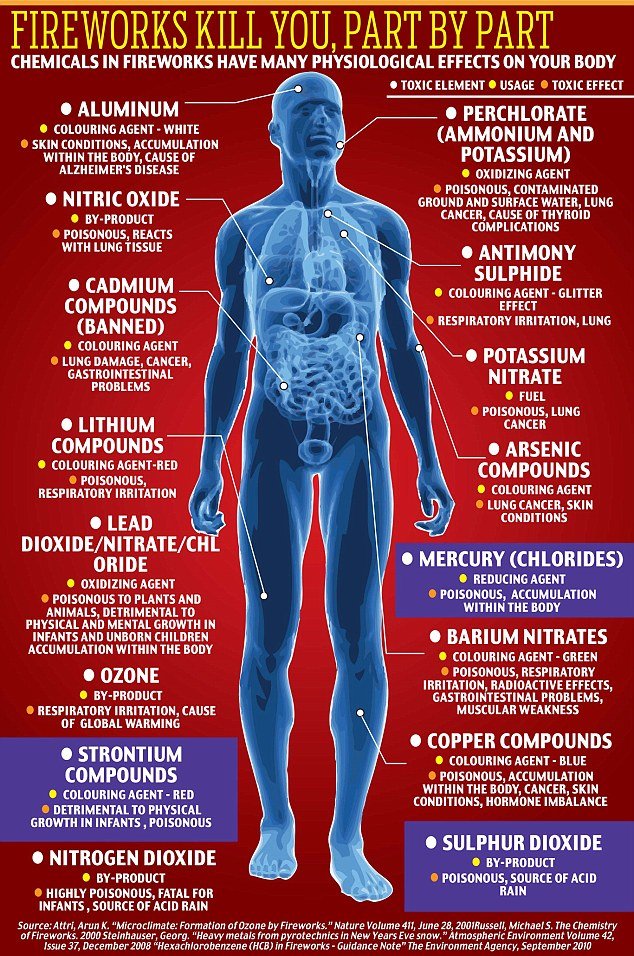
Current Affairs November 10, 2023: Stubble Burning, Composite Water Management Index, Comptroller and Auditor General, Finance Commission
Subscribers of "Current Affairs" course can Download Daily Current Affairs in PDF/DOC
Subscribe to Never Miss an Important Update! Assured Discounts on New Products!
Must Join PMF IAS Telegram Channel & PMF IAS History Telegram Channel
{GS2 – Geo – EG – Water Resources} Composite Water Management Index
- Context (IE | HT | IT): NITI Aayog, the government’s think tank, weighs discontinuing a key water report called Composite Water Management Index (CWMI).
- CWMI was first launched and conceptualized in 2018.
- Aim: to instill a sense of cooperative and competitive federalism among the states by creating pan-India water management metrics covering the entire water lifecycle.
- It offered actionable guidance to states, highlighting their strengths and areas requiring attention.
- NITI Aayog releases it with the Ministries of Jal Shakti and Rural Development.
- The index comprises nine themes.
Why NITI Aayog is Weighing to Discontinue CWMI?
- CWMI is not widely utilised in planning, decision-making, policy, or research within the water sector by public or private stakeholders.
- NITI Aayog suggests exploring alternative approaches for indexing water management.

Water Scarcity in India
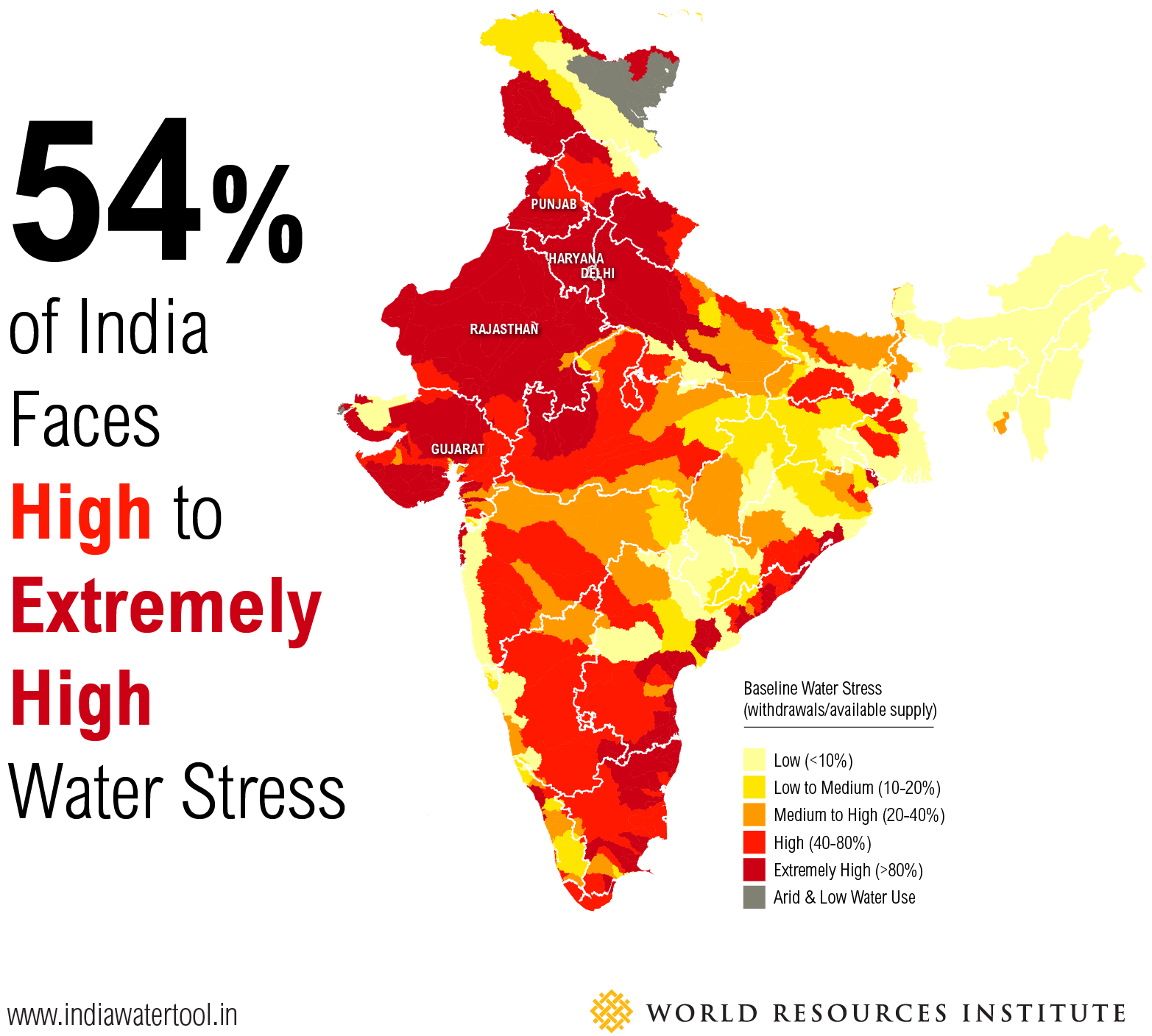
- Water scarcity in India is a major challenge, with nearly 50% of population facing water stress.
- The country has only 4% of the world’s freshwater resources.
- The annual net usable water in India is estimated at 1,121 billion cubic meters (bcm).
- The Ministry of Jal Shakti projects a water demand of 1,093 bcm in 2025 and 1,447 bcm in 2050.
- According to the Central Water Commission, the average annual per capita water availability is 1486 m3 in 2021, projected to decrease to 1367 m3 in 2031.
- As per the Falkenmark Water Index, 76% of Indians are already experiencing water scarcity.
Falkenmark Water Index
|

Reason Behind the Water Scarcity of India
- Overexploitation of groundwater: 76% of the groundwater blocks are ‘over exploited’ in Punjab, 64% in Chandigarh, and 50% in Delhi.
- Water pollution: Despite cleaniness drives, 71% of the Ganga’s monitoring stations reported alarming levels of faecal coliform.
- Climate change: Erratic monsoons, prolonged droughts, and changes in rainfall patterns have disrupted water availability. Drought has affected 2/3rd of India from 2020 to 2022.
- Poor water management: 40% of piped water is lost to leakage in cities like Bengaluru.
- Inefficient water use in agriculture: Agriculture accounts for about 85% of the total water use.
- Inadequate policy implementation: It can lead to water scarcity in several ways.
- Policies that promote inefficient water use: E.g., Subsidies on electricity and water
- Lack of coordination between different levels of government and agencies
- Lack of enforcement of water conservation policies
- Loopholes: National Water Policy, 2012 fails to prioritize users, giving the flexibility to allocate water for industrial use even at the cost of agriculture.
- Encroachment: The First Census of Water Bodies published by the Ministry of Jal Shakti in 2023 has found that around 40,000 water bodies have been encroached upon in India.
- Population growth: India now has the highest population in the world (1.4 billion).
- Urbanization: Urbanization creates more impervious surfaces, limiting groundwater recharge.
- Deforestation: It causes more soil erosion and less rainfall infiltration.
Way Forward: Remedy
- Change in cropping pattern: Implement minimum support policies to reduce cultivation of water-intensive crops like paddy, sugarcane, and banana.
- Better irrigation system: According to the MS Swaminathan committee report on ‘More Crop and Income Per Drop of Water’ (2006), drip and sprinkler irrigation can save 50% of crop cultivation and boost crop yields by 40-60%.
- New Agricultural Practices: Hydroponics, Aquaponics, Aeroponics
{GS2 – Polity – IC – Bodies – Constitutional} Comptroller and Auditor General (CAG)
- Context (IE): As India’s democracy matures, the CAG’s role becomes more important in promoting good governance and safeguarding the people’s interests, says CAG.
- Comptroller and Auditor-General (CAG) heads the Indian Audit and Accounts Department.
- He/she is the guardian of the public purse of the Union of India (the Centre and the states).
Appointment and Term of CAG
- CAG is appointed by the President by warrant under his/her hand and seal.
- CAG holds office for a period of six years or up to the age of 65 years, whichever is earlier.
- CAG is not eligible for reappointment.
Removal
- CAG does not hold his office at the pleasure of the President.
- The removal of a CAG is similar to that of a SC Judge.
- The president can remove CAG based on a resolution passed by both Houses of Parliament with a majority of the total membership of that House and by a majority of not less than two-thirds of the members of that House present and voting.
- CAG can be removed for proven misbehavior or incapacity.
Role of CAG
- CAG ensures transparency, accountability, and financial integrity in government functioning.
- CAG Maintains separation of powers between legislature and executive, ensuring that the government’s financial activities align with legislative intentions.
- The CAG, through audits, promotes good governance by pointing out areas for improvement.
- Its recommendations assist governments in operating more efficiently, cutting down on waste, and maintaining financial discipline.
CAG’s Role in Local Governance
- Auditors chosen by state governments audit local governments’ accounts.
- Technical Guidance and Support (TGS): The CAG helps improve local governance by training these auditors in audit planning and methodologies through TGS training.
- The CAG has provided manuals and guidance to establish the foundation for auditing and accounting by local governments.
Social Audit: Tool for Facilitating Citizen Oversight
- Social auditing is the process through which an organization or government is held accountable to its stakeholders for its social performance. It ensures transparency.
- The 73rd Amendment of the Constitution empowered the Gram Sabhas to conduct Social Audits.
- In India, social audits were first made statutory in the 2005 Rural Employment Act (MGNREGA).
Constitutional Provisions Related to the Office of CAG
Article 148 – Comptroller and Auditor-General (CAG) of India
- Article 148 provides for an independent office of the Comptroller and Auditor General of India.
Article 149 – Duties and Powers of the CAG
- CAG shall audit the accounts of the Union of India and any other authority or body as may be prescribed by any law made by Parliament.
|
Article 150 – Form of Accounts of the Union and The States
- The President, with advice from the CAG, decides how the accounts should be maintained.
Article 151 – Audit Reports
- CAG’s reports on Union accounts go to the President, who then shares them with the Parliament.
- CAG’s reports on State accounts are sent to the State Governor, who then shares them with the State Legislature.
Article 279
- Calculation of “net proceeds” is ascertained and certified by CAG, whose certificate is final.
Independence
- The administrative expenses of the office of CAG are charged to the Consolidated Fund of India (not subject to the vote of Parliament).
- CAG is provided with the security of tenure.
- CAG is not eligible for further office under GoI or the Government of any State after his term.
- His/her salary is equal to that of a judge of the SC.
- The Parliament determines his/her salary and other service conditions.
- His/her rights regarding leave of absence, pension, etc., cannot be altered to his/her disadvantage.
- No minister can represent the CAG in Parliament (both Houses).
- No minister can be called upon to take any responsibility for any actions done by the office of CAG.
CAG is Not Truly Independent
Selection Process of CAG and His/Her Staff
CAG
- The Cabinet Secretary (functions directly under the PM) prepares a shortlist.
- The PM recommends one name from that list to the President.
- If the President approves the same, the appointment of the CAG is made.
- There are no specific eligibility criteria or qualifications for shortlisting or selection.
Staff
- Indian Audit and Accounts Service is a Central Group ‘A’ service recruited by the UPSC.
- The executive also appoints the other staff of CAG.
Criticism
- The entire selection process proves a clear case of conflict of interest, and hence, CAG is neither truly independent nor the guardian of the public purse in its true spirit.
Suggestion (Way Forward)
- If free and fair elections are the backbone of a democracy, an independent audit system is crucial for a country’s financial hygiene.
- Hence, the CAG should have independence in the appointment.
- India can also take inspiration from the appointment process of CAG in the UK and CG in the US.
Reforms Recommended by Vinod Rai for CAG
|
- Expand the coverage of CAG to include all entities that receive public funds or provide public goods, such as PRIs and government-funded societies.
- PPPs are a popular medium for executing infrastructure projects worth millions of rupees, but they are not currently audited by the CAG, and there is no independent oversight of these projects.
- Introduce a Collegium-type mechanism to appoint a new CAG, similar to how the CVC is chosen, to ensure independence and impartiality.
Alleged Corruption Unearthed by CAG
|
{GS2 – Polity – IC – Bodies – Constitutional} Finance Commission (FC)
- Context (TH): The GoI will appoint the 16th Finance Commission (FC) to determine the vertical distribution of revenue between the Centre and the States and the horizontal devolution between states.
- The FC is a constitutional body constituted by the President under Article 280 of the Constitution.
- It is a Quasi-Judicial body constituted every 5th year or at such earlier time as the President deems necessary.
- It consists of a chairman and 4 other members to be appointed by the President. They are eligible for re-appointment.
Qualifications of the members
- Qualifications of the members are to be decided by the Parliament, as provided in the Constitution.
- Accordingly, the Parliament has specified the following specifications:
- The Chairman should be a person with experience in public affairs.
- The members should be selected from amongst:
- A Judge of the High Court or one qualified to be appointed as one.
- A person who has specialized knowledge of finance and accounts of the government.
- A person who has wide experience in financial matters and administration.
- A person who has special knowledge of economics.
Recommendations
- The Finance Commission makes recommendations to the President on
- Distribution of net tax proceeds between the Centre and States and allocation between the states of respective shares of such proceeds.
- Principles that govern grants-in-aid to the States by the Centre.
- Measures needed to augment the Consolidated Fund of State to supplement resources of Panchayats and municipalities in the state.
- Any other matter referred to it by the President in the interests of sound finance.
- The Commission submits its report to the President, who lays it before both houses of the Parliament.
- The recommendations made by the Finance Commission are only advisory in nature and not binding on the government.
{GS2 – Polity – RPA} Criminalization of Politics
- Context (TH): The Supreme Court recently issued guidelines to monitor the speedy disposal of cases against MPs and MLAs.
Criminalization of Politics
- Criminalisation of politics means the rising participation of criminals in the electoral process and their selection as elected representatives of the people.
- According to the Association for Democratic Rights (ADR), there has been an increase of 110% in 2019 in the number of MPs with declared serious criminal cases since 2009.
- ~50% of newly elected Lok Sabha MPs have criminal records, with 30% facing serious criminal cases.
Reasons for the Criminalization of Politics
- Support of Political Parties: For political parties, a criminal individual is a ‘tool’ to secure votes through money and muscle power.
- Poor Conviction Rate: It makes provisions of section 8 of RPA (Disqualification From Membership) ineffective, allowing criminals to go scot-free despite heinous crimes.
- Limitations of ECI: Inadequate financial and human resources for monitoring, limited power to punish/disqualify a candidate, etc.
- Use of caste and ethnicity in elections: Voters vote based on caste, religion, ethnicity, regionalism, etc., ignoring the criminal backgrounds of candidates.
- Highly remunerative: For criminals, politics can be used to extend their illegal businesses and activities. It has turned into a low-risk and high returns business.
- Control over Police: Criminals in politics convert the police from potential adversaries to allies and influence investigations of crimes.
|
Steps Taken to Prevent Criminalization of Politics
Steps taken by the Supreme Court
- In the Association of Democratic Reforms vs. Union of India case, SC directed that all the candidates must furnish their criminal record when filing nomination papers.
- In the Lily Thomas case, the SC held that convicted sitting MPs and MLAs would immediately be disqualified without being given three months’ time for appeal (section 8(4) of the RPA Act, 1951).
- In the People’s Union for Civil Liberties vs. Union of India case, SC gave the citizens the ‘Right to negative vote‘ or NOTA (None of the Above) option during elections.
- In the Public Interest Foundation vs. UoI case, SC directed the trial court to dispose of the criminal cases involving MPs and MLAs/MLCs within 1 year after a court of law frames the charges.
- In 2020, SC made it mandatory for political parties to publish on national newspapers, local vernacular newspapers, & official social media pages detailed information of criminal cases against their candidates and the reasons for selecting them over others without criminal antecedents.
Steps taken by Election Commission
- Setting up of Expense Monitoring Cell.
- Mandatory declaration of assets and existing criminal charges in self-sworn affidavits to the ECI.
- Effective implementation of the Model Code of Conduct (MCC).
Way Forward
- Amendment in RPA Act.
- Setting up of fast-track courts.
- Empowering police by separation of law and order and investigation function of police.
- Providing the Right to reject the candidates.
- Organising State funding of elections (like in the UK).
- Making the affidavits of the candidates public.
- Checking election time crimes such as Paid news.
{GS2 – Social Sector – Education – Higher} FHEIs in India
- Context (TH): In pursuance of the National Education Policy 2020, the University Grants Commission unveiled the ‘University Grants Commission (Setting up and Operation of Campuses of Foreign Higher Educational Institutions (FHEI) in India) Regulations, 2023’.
UGC (Setting up and Operation of Campuses of Foreign Higher Educational Institutions (FHEI) in India) Regulations, 2023
- Approval: UGC will be the sole agency to permit the establishment of campuses in India.
- Eligibility Criteria: FHEIs ranked amongst the top 500 of overall/subject-wise global rankings or possessing expertise in a particular area.
- Faculty: FHEIs can recruit faculty and staff from India or abroad. They shall have autonomy over qualifications, salary, and other conditions of services for making such appointments.
- The international Faculty has to stay in India for at least a semester.
- Quality of Education should be at par with the main campus of the FHEI.
- Online programs and distance learning mode education are not allowed.
- Fee Structure: FHEI’s fee structure should be transparent and reasonable. Full or partial need-based scholarships may be provided.
- FHEIs can open more than one campus and can collaborate with Indian universities and Indian Industries, but sharing of Infrastructure is not permitted.
Advantages of Internationalisation of Higher Education in India
- Cultural Exchange helps to create a more inclusive and tolerant society, preparing students to be global citizens who can navigate diverse environments and work across borders.
- ‘Brain Drain’ to ‘Brain Gain’: It enriches the intellectual capital of the country, as these individuals bring diverse perspectives, experiences, and expertise, contributing to the overall development.
- Collaboration in Emerging Fields such as AI, renewable energy, biotechnology, and entrepreneurship.
- Boosts Entrepreneurship through exposure to global markets, ideas, and innovation ecosystems, inspires the development of start-ups, and fosters an entrepreneurial spirit.
- Enhances India’s position in the global ranking of universities.
Challenges Associated with the Internationalisation of Higher Education
- Shortage of resources like state-of-the-art infrastructure, laboratories, and technological resources.
- Teacher vacancies, faculty shortages.
- Cultural and language barriers hinder academic performance, and social integration.
- Ensuring quality by harmonizing academic standards and assessment methods across institutions from different countries.
- International degrees, qualifications, and credits students earn through international collaborations may not always be recognized or easily transferable.
{GS3 – Envi – Air Pollution} Stubble Burning
- Context (LM | TH | DTE | IE): The Supreme Court has ordered Punjab, Haryana, Uttar Pradesh, and Rajasthan to halt stubble burning as an immediate measure to control air pollution.
- Stubble (parali) burning is a practice of removing paddy crop residues by setting fire.
- This practice is often used to clear fields for the next planting season.
- It is common in Oct-Nov across Northwest India, primarily in Punjab, Haryana, and UP.

Negative Consequences of Stubble Burning
- Air pollution: Releases a number of harmful pollutants, like particulate matter, carbon monoxide, and nitrogen oxides.
- Soil health: It destroys the nutrients and microorganisms necessary for the soil’s fertility.
- Greenhouse gas emissions
Why Stubble Burning has Become Popular
- Stubble burning is a quick and low-cost method for disposing of paddy stubble.
- It has gained more prominence due to two reasons:
- Use of combine harvesters, as they leave tall stalks that need removal before replanting.
- In 2009, Punjab and Haryana passed laws that postponed the sowing of paddy. This left farmers with less time to harvest paddy, clear fields, and sow wheat for the next cycle.
|
Stubble Burning and Delhi’s Winter Air Pollution
- During the peak time of burning, farm fires contribute around 40% of PM 2.5 in Delhi air.
- Farm fires burn in a small window. When taken for whole year, their contribution is less than 3% to Delhi’s air pollution.
- However, though in these small period (around 45 days) when farm fires becomes one major air polluter, it creates havoc in Delhi NCR region.
- Farm fires and other factors combined transform Delhi into a gas chamber in winter months.
|


Factors Which Contributes in Making Stubble Burning a Major Cause of Air Pollution
Change in Wind Direction
- With SW monsoon withdrawal, the direction of wind over NW India changes to north westerly.
- In winters, Delhi receives 72% of wind from NW and the only 28% from the Indo-Gangetic plains.
- The NW winds brings farm fire released pollutants to Delhi from Haryana, Punjab, and Rajasthan.

Dip in Temperature
- As temperatures drops, the inversion height (the layer beyond which pollutants cannot disperse into the upper atmosphere) is lowered due to thermal inversion.
- The concentration of pollutants in the air increases when this happens.

Low Wind Speed
- High-speed winds are very effective at dispersing pollutants.
- But winters bring a dip in wind speed over all as compared to in summers.
Mitigation of Stubble Burning
Ex-situ Mechanisms
- Biomass co-firing in thermal power plants: Co-firing five 5-7% pellets can prevent 38 million tonnes of CO2 every year
- Production of bio-CNG
- Cattle fodder
Concern
- Slow adoption of biomass co-firing due to supply chain issues and technical limitations.
- Paddy straw and stalks, due to their high silica content, are less digestible and nutritious for livestock.
In-situ Mechanisms
- Happy seeders and super seeders: Agri implements used for direct seed sowing without prior tillage (zero-till farming).
- Bio-decomposers: Cost effective method. E.g. Pusa bio-decomposer
Concerns
- Availability issue and high cost of happy seeders and super seeders
- Bio-decomposers takes a longer duration to decompose the residues.
Way Forward
- Taking up paddy varities with less maturity time, so that, farmers have time for residue removal.
- The Punjab government will ban PUSA-44 paddy cultivation from next year due to it water intensivity and longer maturity period.
- The ex-situ and in-situ mechanisms must be made feasible and accessible for farmers.
UPSC Mains 2015: Mumbai, Delhi and Kolkata are the three mega cities of the country but the air pollution is much more serious problem in Delhi as compared to the other two. Why is this so? (200 words)
Polluting Industry in close vicinity in Delhi
Vehicular Emissions
Geography and Climate
Farm Straw Burning
|
{GS3 – Envi – Laws} Energy Conservation Building Code 2017
- Context (TH): Recently, the Paris-based International Energy Agency (IEA) praised India’s Energy Conservation Building Code (ECBC), 2017, in its World Energy Outlook 2023 report.
Energy Conservation Building Code (ECBC) 2017
- The ECBC was released by the Bureau of Energy Efficiency (BEE – Ministry of Power) in 2007 and was updated in 2017.

- The code sets minimum energy standards for commercial buildings (private and govt) with a
- Connected load of 100 kW or more or
- Contract demand of 120 kVA or more, like hospitals, shopping complexes, etc.
- The code is applicable for both new and retrofitted existing buildings.
- It includes incremental, voluntary energy efficiency performance levels: ECBC, ECBC Plus, and Super ECBC, with each level offering increased energy savings compared to conventional buildings.
- While the code acts as a National Standard, the states can modify it per their regional needs.
- It aims to achieve 25-50% energy savings in compliant buildings.
- The code focuses on the following building design components:
- Envelop (walls, roofs, and windows)
- Lighting systems
- HVAC (heating, ventilation, and air conditioning) systems
- Electric power systems.
- Energy Conservation Amendment Act 2022 expands ECBC into the Energy Conservation and Sustainability Building Code (ECSBC).
- Currently, 23 Indian states have notified rules to enforce ECBC compliance, while large states like Maharashtra and Gujarat are still drafting rules.
Bureau of Energy Efficiency (BEE)
International Energy Agency (IEA)
|
Energy Conservation (Amendment) Act, 2022
- It amended the Energy Conservation Act 2001.
Objectives
- To promote efficient use of energy and carbon-neutral technologies.
- To support India’s commitments to combat climate change and achieve net-zero emissions by 2070.
Key Provisions of the Amendment Act
- It empowers GoI to specify a carbon credit trading scheme, which allows entities to trade permits for emitting greenhouse gases.
- It mandates using renewable energy and carbon-neutral technologies by designated consumers (entities that consume a specified amount of energy or more in a year).
- It introduces the concept of Energy service companies (ESCOs) (entities that provide energy efficiency or conservation services to consumers).
- It expands the scope of ECBCs. GoI may prescribe ECBCs for different types of buildings, such as residential, commercial, industrial, or public.
- The Act expands the scope to include vehicles (as defined under the Motor Vehicles Act, 1988) and vessels (including ships and boats).
- It enhances the penalties for non-compliance with the provisions/rules of the act.
Carbon Credit
|
Energy Conservation Initiatives in India
- Standards and Labelling (S&L) Programme for equipment and appliances announced in 2006 to provide the consumer with an informed choice about energy saving and thereby the cost-saving potential of the relevant marketed product.
- National Mission for Enhanced Energy Efficiency (NMEEE): It is one of the eight missions under the National Action Plan on Climate Change (NAPCC).
- The NMEEE spelt out four initiatives to enhance energy efficiency in energy-intensive industries:
- Perform Achieve and Trade Scheme (PAT): A market-based mechanism to enhance the cost-effectiveness in improving energy efficiency in energy-intensive industries through certification (Energy Saving Certificates (ESCerts)) of energy saving, which can be traded.
- Market Transformation for Energy Efficiency (MTEE) for accelerating the shift to energy-efficient appliances in designated sectors.
- Energy Efficiency Financing Platform (EEFP) for creating mechanisms to help finance demand-side management programmes in all sectors by capturing future energy savings.
- Framework for Energy Efficient Economic Development (FEEED) for developing fiscal instruments to promote energy efficiency.
- UJALA Yojana: It was launched in 2015 under Unnat Jyoti by Affordable LED for All (UJALA) scheme.
- Under it, LED bulbs, LED Tube lights and Energy-efficient fans are being provided to domestic consumers to replace conventional and inefficient variants.
{GS3 – Envi – UNFCCC} Loss and Damage Fund for Climate Damages
- Context (TH): Loss and damage fund talks highlight wealthy nations’ reluctance to fulfill their responsibilities for their historical role in climate change.
What is Loss and Damage
- Loss and damage represents the irreversible consequences of climate change.
- They are impacts that can not be avoided or mitigated through adaptation efforts.
- They include non-monetary losses that impact fundamental human rights and well-being.
- Loss and damage include:
- Economic losses
- Human casualties
- Degradation of ecosystems
- Degradation of cultural heritage
History of Loss and Damage Fund
- The issue of Loss and Damage has been raised since UNFCCC was founded.
- The Alliance of Small Island States (AOSIS) and the Least Developed Countries Group have long sought to establish liability and compensation for loss and damage.
- The Warsaw International Mechanism (WIM), established in 2013, is the first formal acknowledgment of the need to compensate developing countries affected by climate disasters.
- At COP 26, a task force was set up to explore a funding arrangement for loss and damage.
Loss and Damage Fund
- Loss and Damage Fund will assist poor and developing countries that are vulnerable to the adverse effects of climate change.
- This fund is established by COP-27 in Sharm El-Sheikh, Egypt in 2022.
- It will address the issue of climate reparations.
|
Who will Fund the Loss and Damage Fund?
- Developed countries and other private and public sources (like international financial institutions)
- Other major economies (can fund it down the line)
Why Loss and Damage Fund is Necessary?
- It’s a justice issue for developing countries who despite contributing the least to climate change, bear the greatest vulnerability to its impacts.
- It can help to reduce poverty and inequality as climate change is disproportionately affecting the poorest and most vulnerable people in the world.
{Prelims – IPR – GI} Products from Uttarakhand Bags GI Tag
Geographical Indication (GI)
- Geographical Indication (GI) is a name or sign used on certain products corresponding to a specific geographical location or origin. It is a type of intellectual property right (IPR).
- It is protected by the WTO’s Agreement on Trade-Related Aspects of IPRS (TRIPS) and the Geneva Act of the Lisbon Agreement on Appellations of Origin and Geographical Indications.
- Countries have their own frameworks for registering and protecting GI tags.
GI Tag in India
- India, as a World Trade Organization (WTO) member, enacted the Geographical Indications of Goods (Registration and Protection) Act,1999.
- It is a part of the IPR under the Paris Convention for the Protection of Industrial Property.
- Darjeeling tea became the first GI-tagged product in India in 2004–2005.
Registration
- The Geographical Indication Registry (Chennai) issues these tags under the Department of Industry Promotion and Internal Trade, Ministry of Commerce and Industry.
- GIs can be registered for various products, including agricultural products, food products, handicrafts, and manufactured goods.
- GI Tag is valid for ten years and can be renewed.
Benefits/Significance of GI Tag
- The GI tag ensures that none other than those registered as authorised users (or at least those residing inside the geographic territory) are allowed to use the popular product name.
- GIs can help to protect traditional products from being counterfeited or imitated.
- They can also help promote local economies by ensuring consumers know the product’s origin.
List of Products from Uttarakhand that got GI Tags
- Uttarakhand’s Berinag tea: Highly sought-after by London tea houses and tea blender
- Bichhu buti fabrics: Made from Himalayan nettle fibres
- Uttarakhand mandua: A finger millet grown in Garhwal and Kumaon
- Jhangora: A home grown millet cultivated in the rain-fed areas of Uttarakhand
- Gahat: A pulse grown in the dry regions of Uttarakhand
- Lal chawal: A red rice organically grown in the Purola region
- Kala bhat (black soybean)
- Malta fruit: a large orange variety
- Chaulai (ramdana): A grain used on fasting days
- Buransh juice: Obtained from the red flowers of the Rhododendron arboretum
- Pahari toor dal
- Uttarakhand likhai or wood carvings
- Nainital mombatti (candles)
- Rangwali pichhoda of Kumaon
- Ramnagar Nainital litchis
- Ramgarh Nainital peaches
- Chamoli wooden Ramman masks,
- Almora Lakhori mirchis: A chilli variant




![PMF IAS Environment for UPSC 2022-23 [paperback] PMF IAS [Nov 30, 2021]…](https://pmfias.b-cdn.net/wp-content/uploads/2024/04/pmfiasenvironmentforupsc2022-23paperbackpmfiasnov302021.jpg)
